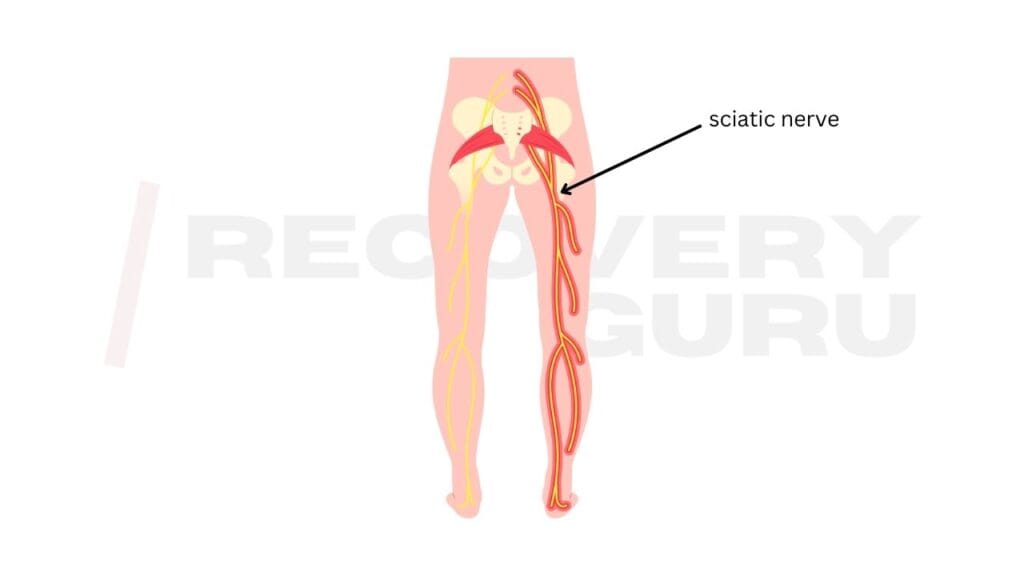Sciatica pain can be frustrating and tough to manage. It’s a condition that causes discomfort along the sciatic nerve, often felt in the lower back, legs, or even all the way down to the foot. An article in the Journal of Neurosurgery: Spine estimated that more than 5% of U.S. adults experience sciatica, with a 40% likelihood of facing it at least once in their lifetime.
For those looking to relieve this pain without invasive methods, infrared saunas are gaining attention as a natural approach to help ease the symptoms.
Using gentle, deep-penetrating heat, infrared saunas offer a potentially soothing experience. Unlike traditional saunas, they focus on warming the body directly rather than heating the air around you.
In this article, we’ll explore why infrared saunas are becoming a popular option for people with sciatica and what benefits they might bring to those seeking relief.
What is Sciatica?

Sciatica is pain that radiates along the path of the sciatic nerve, which runs from your lower back through your hips and down each leg. For many people, this pain can be sharp and severe, often making it hard to move around comfortably. It’s not actually a condition in itself but rather a symptom of something else, usually a herniated disc, spinal stenosis, or even simple muscle tension pressing on the sciatic nerve.
People with sciatica often feel pain, numbness, or a tingling sensation in the affected leg, and it can vary from mild to intense. It’s one of those issues that tends to get in the way of daily activities, making everything from walking to sitting a challenge. Traditional treatments for sciatica include physical therapy, pain medication, and in some cases, surgery. But for those who prefer a more natural route, infrared saunas are being considered as a potential source of relief.
Infrared saunas work by delivering deep warmth directly to muscles and nerves, which could ease the tension pressing on the sciatic nerve. In the sections ahead, we’ll look at how this deep-reaching warmth may help ease sciatica pain.
How Infrared Saunas Work for Sciatica
Infrared saunas use infrared light to create a gentle heat that penetrates deep into your body’s tissues. Unlike traditional saunas, which heat the surrounding air to warm you up, infrared saunas work differently by directly targeting muscles, joints, and nerves. This approach allows you to feel the effects of the heat more deeply and without needing extremely high temperatures.
The infrared heat reaches beneath the skin’s surface, promoting blood circulation and loosening up any tense or tight areas. For someone with sciatica, this deep warmth may help relax the muscles surrounding the sciatic nerve, which can reduce the pressure causing the pain. Another plus is that infrared saunas operate at a much lower temperature than traditional saunas, making the experience more comfortable for those who aren’t used to extreme heat.
In an infrared sauna, sessions typically last about 20 to 40 minutes. During that time, the warmth slowly works its way through your body, focusing on deeper layers of tissue. This kind of heat can be ideal for sciatica, as it can reach the lower back and leg muscles, where sciatic pain often originates.
Benefits of Infrared Saunas for Sciatica
Infrared saunas offer a few potential benefits that may help ease sciatica symptoms. The key here is the deep, penetrating heat, which works on a level that can reach muscles and nerves.
Here’s how this warmth could benefit someone dealing with sciatica:
- Pain Relief Through Muscle Relaxation: One of the biggest advantages of infrared saunas is their ability to relax muscles. When you’re dealing with sciatica, the surrounding muscles can get tense, adding pressure to the sciatic nerve and increasing discomfort. The heat from an infrared sauna can loosen up those tense muscles, reducing the nerve compression that’s responsible for the pain.
- Improved Blood Circulation: Better blood flow helps muscles and tissues receive the oxygen and nutrients they need to heal. Infrared saunas increase blood circulation, which might help relieve sciatica pain over time. When blood flow improves, it can reduce inflammation and promote recovery in areas affected by nerve compression.
- Reduced Inflammation: Inflammation is often behind the pain in sciatica, especially if it’s related to a herniated disc or other structural issue. Infrared heat encourages the body to release tension and calm inflammation, providing a soothing effect that can last beyond the sauna session.
- Less Stiffness and Tension: Sciatica often leads to stiffness in the lower back and legs. Regular sessions in an infrared sauna can keep muscles loose and flexible, making it easier to go about your daily routine without the added tension. This may also make physical therapy exercises more effective, as relaxed muscles respond better to movement.
If you’re interested on an infrared sauna, might as well take a read of our honest reviews here:
Infrared Sauna vs. Other Treatments

When it comes to treating sciatica, there are plenty of options out there—each with its own approach and effectiveness.
Comparing infrared sauna therapy to more common treatments can give a clearer idea of who might benefit the most from adding sauna sessions to their routine.
- Physical Therapy: Physical therapy focuses on targeted exercises to strengthen muscles around the sciatic nerve and improve flexibility. It’s highly effective but may require time and consistency to show results. Infrared sauna therapy, on the other hand, offers more immediate relief by relaxing tense muscles and reducing inflammation. Many people find the two therapies work well together, as loosened muscles from sauna sessions can make physical therapy exercises easier and more effective.
- Medication: For quick pain relief, doctors often prescribe anti-inflammatory or pain medications. While effective for short-term relief, medications aren’t ideal as a long-term solution, especially if there are side effects to consider. Infrared sauna therapy, in contrast, offers a drug-free approach to pain management, which may appeal to those looking to reduce reliance on medications.
- Massage and Chiropractic Care: These therapies work well for sciatica relief, especially when combined with consistent sessions. They help align the body and relax muscles, much like an infrared sauna. However, unlike saunas, massages and chiropractic adjustments require appointments and can be more costly over time. Having access to an infrared sauna at home, if possible, can offer a more convenient option.
Infrared sauna therapy might not replace all forms of treatment, but it can complement them. For those who want a non-invasive, convenient option, infrared saunas provide flexibility and the added benefit of relaxation.
How to Use Infrared Sauna for Sciatica Relief
Using an infrared sauna can be beneficial, but safety matters, especially if you’re dealing with pain like sciatica. To make the most out of your sessions, it’s important to follow some simple guidelines.
- Start Slow: If you’re new to infrared saunas, begin with shorter sessions of around 15 to 20 minutes. As your body adjusts to the heat, you can gradually work up to longer sessions, around 30 to 40 minutes. This approach allows your body to get used to the deeper heat without overwhelming it.
- Also read: How long and how hot should my sauna be?
- Frequency Matters: For sciatica relief, two to three sauna sessions per week can be effective. However, if you feel comfortable, you might benefit from more frequent sessions, as long as they don’t leave you feeling drained or overheated. Listen to your body and see how it responds.
- Also read: When is the best time to sauna?
- Stay Hydrated: Infrared saunas can make you sweat a lot, so drinking water before, during, and after your session is crucial. Proper hydration helps your muscles recover better and reduces the risk of dehydration, which could aggravate sciatica symptoms.
- Check with Your Doctor: Although infrared saunas are generally safe, it’s a good idea to consult your healthcare provider before beginning a regular routine, especially if you have underlying health issues or are on medication.
- Avoid Overheating: If you start to feel dizzy, lightheaded, or uncomfortable, it’s best to step out of the sauna immediately. Overheating can do more harm than good, so it’s important to listen to your body’s cues.
If you’re not that sure, you can use our free sauna calculators to determine the right time, calorie, and post-session water intake.
Conclusion: Do Infrared Saunas Work for Sciatica?
Infrared saunas offer a natural, relaxing way to help manage sciatica symptoms. The deep-penetrating heat can relieve muscle tension, improve blood flow, and reduce inflammation—benefits that directly target the sources of sciatica pain. While an infrared sauna may not replace other treatments entirely, it can work well alongside therapies like physical therapy or stretching exercises for more comprehensive relief.
For those looking to reduce reliance on medication or seeking an at-home approach to pain management, infrared saunas can be a great option. However, it’s always a good idea to consult with a healthcare provider before starting any new treatment.
With the right approach, an infrared sauna could be a valuable tool in managing the challenges of sciatica, helping you find a little more comfort and mobility each day.







